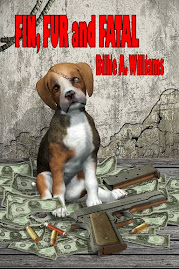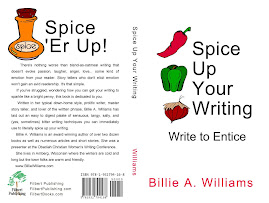C is for Clue or Crime or a Cauldron of evil. Clues come in all shapes and sizes. The very observant person will see them, extract them and lace them together to provide an "aha!" moment for you the reader.
The reader may have thought the red herring was the real clue [look for more on red herring later in this tour].
A clue might be two nearly empty wine glasses on the counter by the sink when only one person was supposedly present all evening. Were there enough other dishes to suggest a couple days of accumulation? Was there a faint lipstick smudge on one in a man's apartment? While it doesn't mean he had feminine company (he might be a transvestite,) it doesn't necessarily mean she provided the arsenic laden drink that killed the man.
A cauldron of stew present on the range. Was any of it eaten? Was it the source of his poisoning? Was it merely food poisoning and accidental lethal dose of death?
 |
| A Mystery Thriller novel |
Even if the woman, of the lipstick smudge, was seen leaving the apartment early that morning, you might ask did she? Again other facts and suppositions need to be examined, among them motive, access to the method—in this case poison—if indeed it was poison and not food poisoning by tainted food, and opportunity.
Will you find rat poison residue in the same woman's purse or jacket pocket? Rat poison contains arsenic, which could be the source of the arsenic found at the scene or in the wine glass, but why wouldn't she rinse the glasses if that were the case? So many questions. Clues should help a sleuth sort through them.
Observe well, but decipher your clues carefully. That makes for an intriguing story. Unwrapping the clues as if you were unwrapping a much hoped for birthday present, thrills the reader and keeps them turning pages long into the night.











No comments:
Post a Comment